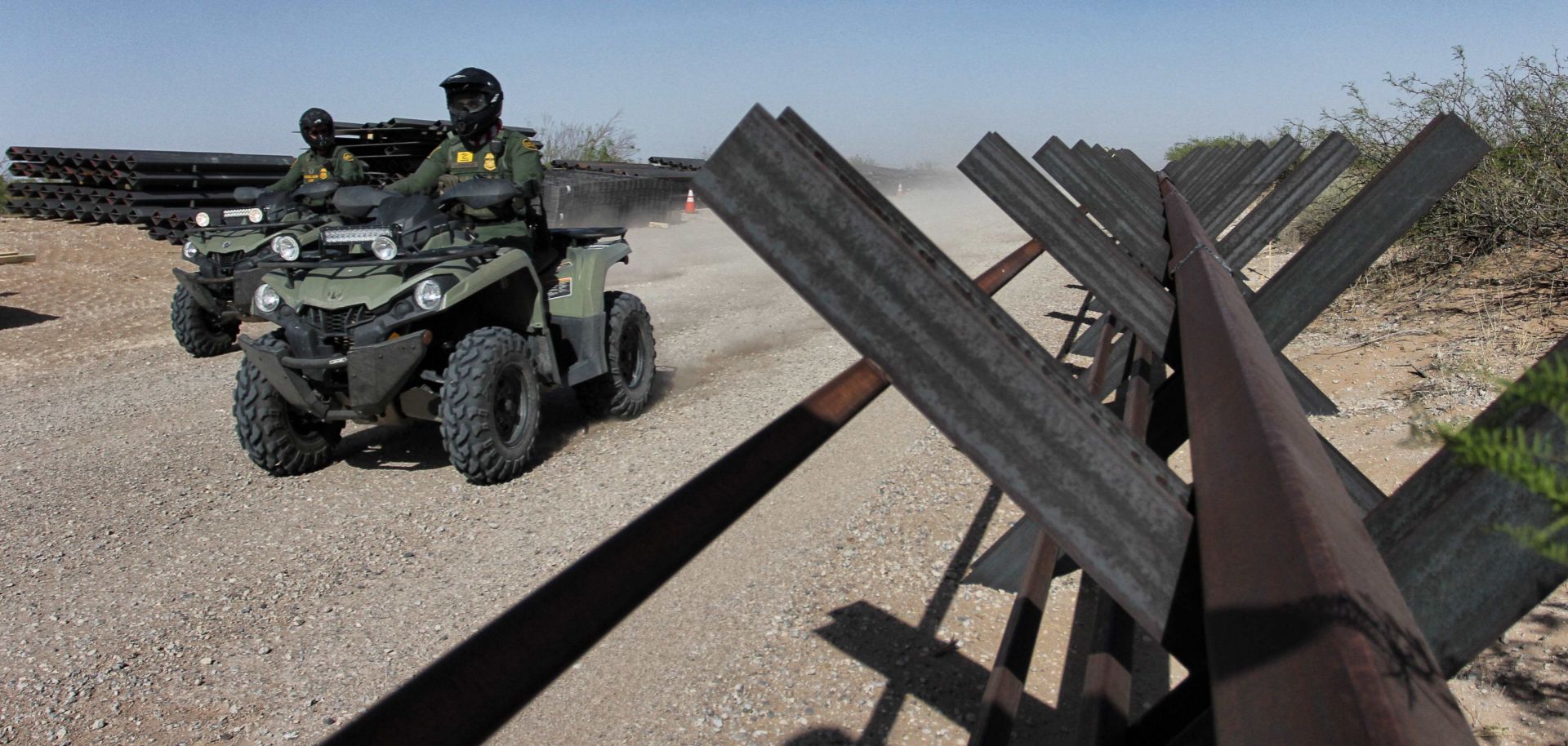COLUMNS
Why Walls and Sensors Aren't the Answer to the U.S.-Mexico Border Dilemma

Jan 15, 2019 | 12:00 GMT

U.S. Border Patrol agents ride ATVs alongside an unfinished portion of a border wall between Ciudad Juarez in Mexico and Santa Teresa in the United States on April 17, 2018. Walls and sensors can only do so much to prevent illegal crossings over America's southern border.
(HERIKA MARTINEZ/AFP/Getty Images)
Highlights
- There are compelling national security arguments for securing the U.S.-Mexico border, but terrorism is not one of them.
- Walls, fences and sensors improve border security, but their effectiveness is limited if personnel are unable to respond rapidly to efforts to breach them.
- The better physical security measures become, the more that people become the weak link in the security chain.
- Because of this, border security requires a holistic approach that not only addresses physical security at the border but also the economic forces that tempt people to smuggle contraband and humans across borders.
Subscribe Now
SubscribeAlready have an account?
